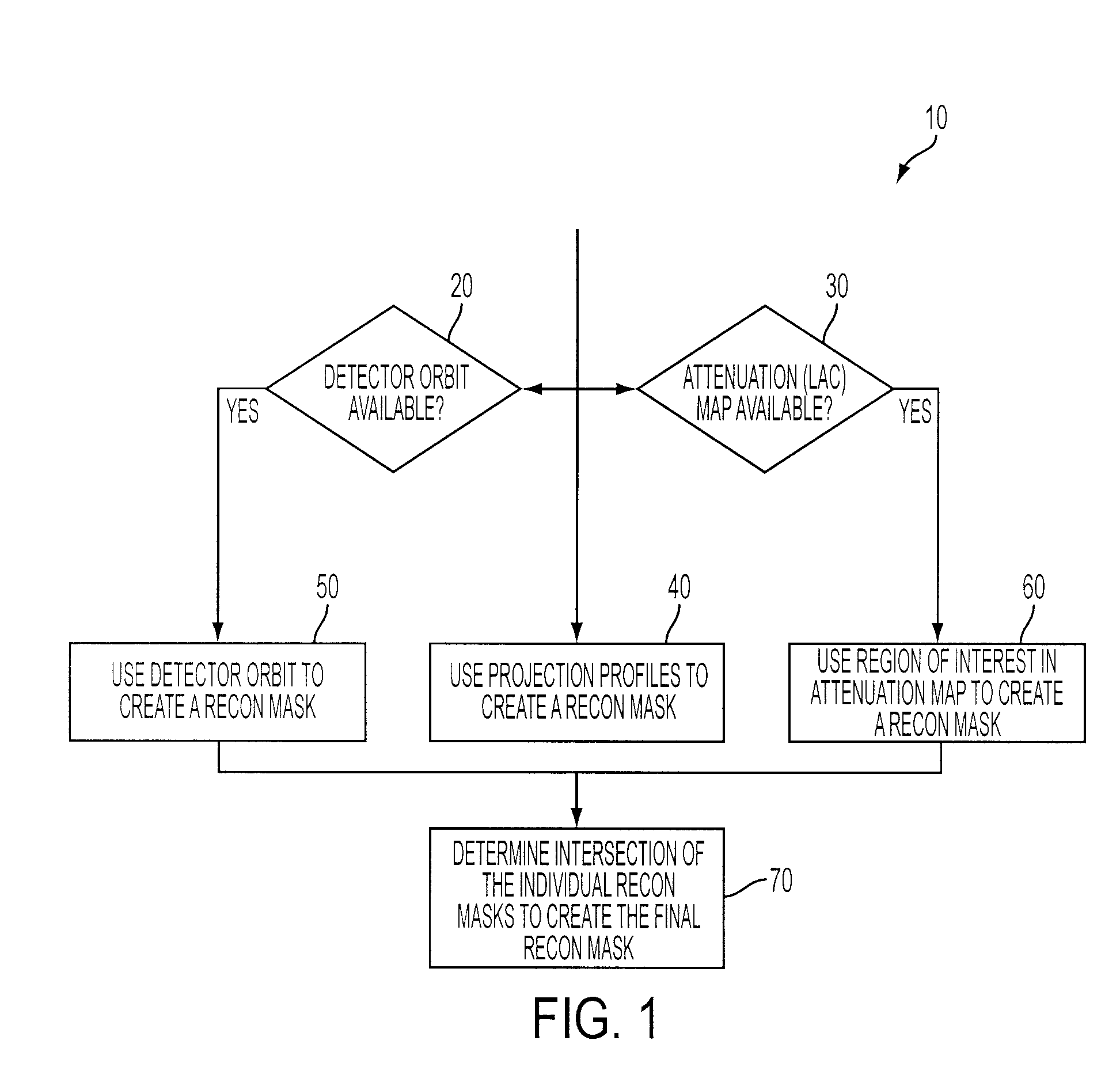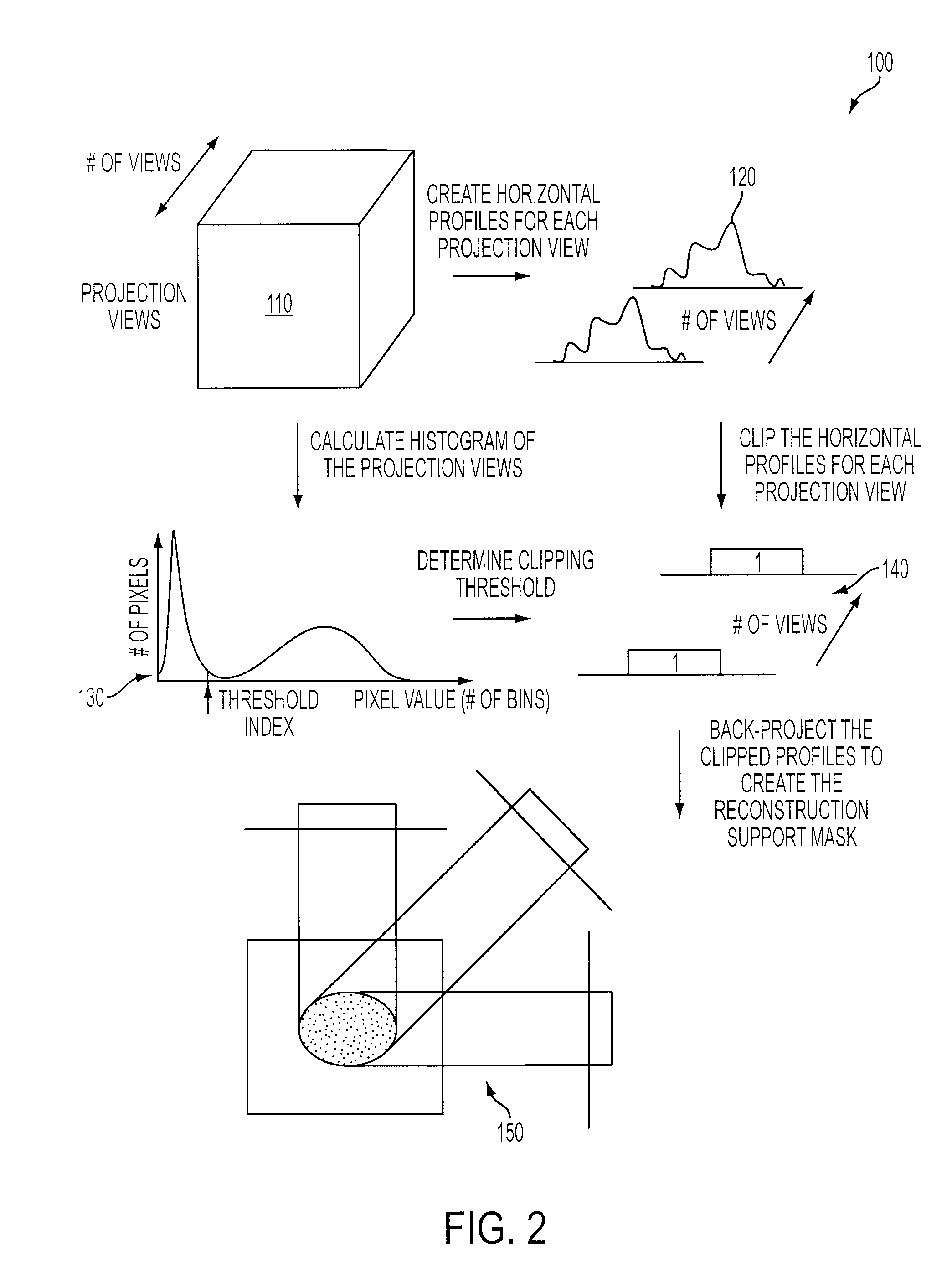Reconstruction Support Regions For Improving The Performance of Iterative SPECT Reconstruction Techniques
a reconstruction support and reconstruction technique technology, applied in the field of nuclear medicine, can solve the problems of inability to achieve the above-described effort, computationally prohibitive model the system matrix,
- Summary
- Abstract
- Description
- Claims
- Application Information
AI Technical Summary
Benefits of technology
Problems solved by technology
Method used
Image
Examples
Embodiment Construction
[0020]The present invention will now be described and disclosed in greater detail. It is to be understood, however, that the disclosed embodiments are merely exemplary of the invention and that the invention may be embodied in various and alternative forms. Therefore, specific structural and / or functional details disclosed herein are not to be interpreted as limiting the scope of the claims, but are merely provided as an example to teach one having ordinary skill in the art to make and use the invention.
[0021]Tomographic projection images measure radioactive events emanating from an object of interest, e.g., a patient, from multiple view angles. The object of interest, e.g., a patient or portion of a patient, typically encompasses only a fraction (25-50%) of the Field of View (FOV) of a detector. However, iterative reconstruction techniques often reconstruct the entire FOV of a detector, including those regions that fall beyond the object of interest. As a result, iterative reconstr...
PUM
 Login to View More
Login to View More Abstract
Description
Claims
Application Information
 Login to View More
Login to View More - R&D
- Intellectual Property
- Life Sciences
- Materials
- Tech Scout
- Unparalleled Data Quality
- Higher Quality Content
- 60% Fewer Hallucinations
Browse by: Latest US Patents, China's latest patents, Technical Efficacy Thesaurus, Application Domain, Technology Topic, Popular Technical Reports.
© 2025 PatSnap. All rights reserved.Legal|Privacy policy|Modern Slavery Act Transparency Statement|Sitemap|About US| Contact US: help@patsnap.com



